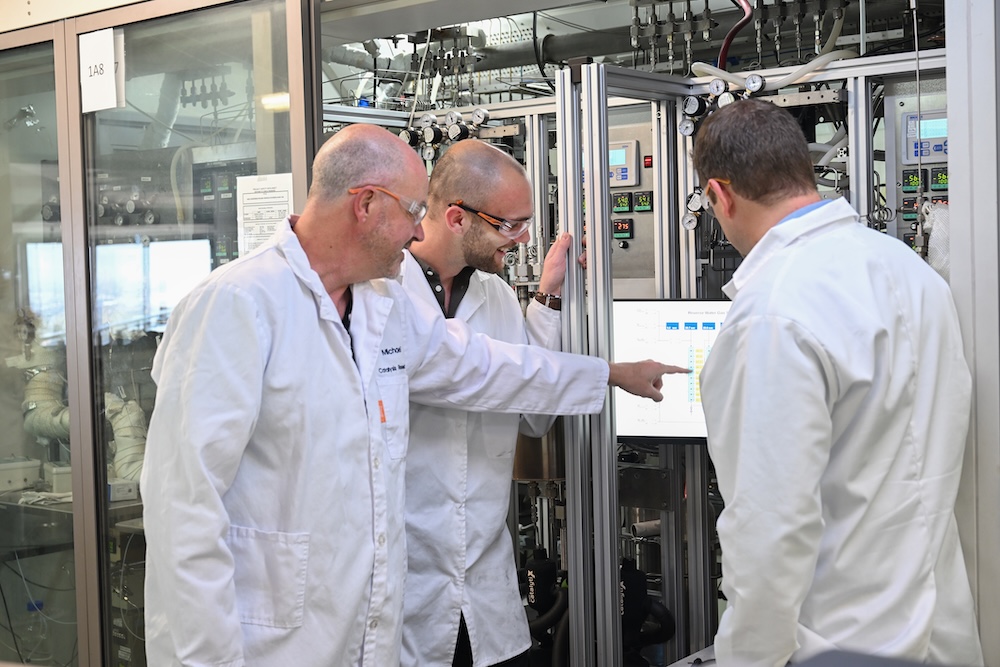Report on Pennsylvania’s Data Center Regulation and Sustainable Development Implications
Executive Summary
A hearing conducted by the Pennsylvania House Energy Committee on October 22, 2025, addressed the escalating energy demands of data centers and their impact on the state’s residents and sustainable development objectives. The discussion centered on proposed legislation (HB1834) aimed at regulating data center development to align with key Sustainable Development Goals (SDGs), particularly SDG 7 (Affordable and Clean Energy), SDG 8 (Decent Work and Economic Growth), and SDG 11 (Sustainable Cities and Communities). The report analyzes the conflict between the rapid, unregulated growth of digital infrastructure and the principles of equitable cost distribution, energy sustainability, and responsible economic expansion.
Analysis of Energy Affordability and Infrastructure (SDG 7 & SDG 9)
The proliferation of data centers poses a direct challenge to Pennsylvania’s ability to ensure access to affordable and reliable energy for all citizens, a cornerstone of SDG 7. The state’s energy infrastructure, a critical component of SDG 9, is under significant strain.
- Consumer Cost Burden: It was reported that Pennsylvania residents have incurred approximately $16.6 billion in electricity costs directly attributable to the increased load from data centers. Consumer advocates argue this violates the principle that cost-causers should bear the financial responsibility for their energy consumption.
- Projected Energy Shortfall: Grid operator PJM projects that data centers will account for nearly all of the 32-gigawatt increase in energy demand by 2030. The Chair of the Public Utility Commission, Stephen DeFrank, described this impending energy shortage as an “iceberg,” emphasizing the urgent need for regulatory foresight to maintain grid stability and affordability.
- Call for Policy Intervention: The current policy framework is deemed inadequate for managing this new demand, leading to calls for legislative action to protect consumers and ensure the sustainable development of energy infrastructure.
Economic Growth vs. Sustainable Communities (SDG 8 & SDG 11)
The debate highlights the tension between promoting economic growth (SDG 8) through the data center industry and ensuring the development of sustainable and equitable communities (SDG 11). While the industry provides economic benefits, the external costs are disproportionately borne by residential and small business utility customers.
- Industry Contributions to Economic Growth: Industry representatives cited a 2023 study indicating that data centers supported over 18,000 jobs and contributed more than $1.36 billion in state and local tax revenue. They argue that restrictive legislation could stifle this economic activity.
- Impact on Community Sustainability: Lawmakers and consumer advocates expressed concern that rising utility bills, driven by data center energy use, threaten the financial stability of families and small businesses, undermining community resilience.
- Proposed Mitigation Measures: To address these inequities and support SDG 11, the proposed bill includes provisions to shield ratepayers from costs “directly attributable” to data centers and mandates contributions to the Low-Income Home Energy Assistance Program (LIHEAP), starting at $250,000 annually for facilities demanding 25 megawatts or more.
Mandating Clean Energy and Responsible Production (SDG 7, SDG 12, & SDG 13)
A significant component of the proposed legislation focuses on promoting clean energy and responsible consumption patterns, aligning with SDG 7 (Affordable and Clean Energy), SDG 12 (Responsible Consumption and Production), and SDG 13 (Climate Action).
- Renewable Energy Mandate: The bill proposes that a minimum of 25% of the electricity consumed by a new data center must be generated from renewable sources. This provision aims to ensure that the growth of the digital economy does not exacerbate climate change.
- Feasibility and Industry Concerns: This mandate faced opposition from business and trade representatives, who argued it was “unreasonable” and “likely unworkable.” Concerns were raised that local geography may not be suitable for renewable energy generation, such as solar or wind, making the requirement a barrier to development. This highlights the challenge of implementing uniform environmental standards across diverse regions.
Future Outlook and Sustainable Infrastructure
The hearing concluded with unresolved questions regarding the long-term sustainability of the data center industry’s growth trajectory. Concerns about a potential “speculative bubble” were raised, questioning the risk of abandoned projects if demand were to suddenly decrease. Industry representatives refuted this, stating that current construction cannot keep pace with demand. The legislative debate in Pennsylvania reflects a broader, global challenge: how to balance the infrastructural demands of the digital age with the urgent need for sustainable, equitable, and climate-resilient development as outlined in the Sustainable Development Goals.
Analysis of Sustainable Development Goals in the Article
1. Which SDGs are addressed or connected to the issues highlighted in the article?
The article discusses issues related to energy consumption, economic impacts, infrastructure development, and social equity, which connect to several Sustainable Development Goals (SDGs). The following SDGs are addressed:
- SDG 7: Affordable and Clean Energy: The central theme is the massive energy demand from data centers, the rising cost of electricity for consumers, the strain on the power grid, and a legislative proposal to require the use of renewable energy sources.
- SDG 8: Decent Work and Economic Growth: The article highlights the economic benefits of data centers, including job creation and tax revenue, which are key components of economic growth.
- SDG 9: Industry, Innovation and Infrastructure: The development of data centers represents a significant investment in modern digital infrastructure. The article also discusses the impact of this new infrastructure on the existing electrical grid, highlighting the need for sustainable and resilient systems.
- SDG 10: Reduced Inequalities: A core conflict presented is the inequitable distribution of costs, where residential consumers bear the financial burden of increased electricity demand caused by data centers. The proposed legislation aims to correct this imbalance.
2. What specific targets under those SDGs can be identified based on the article’s content?
Based on the issues discussed, several specific SDG targets can be identified:
- Under SDG 7 (Affordable and Clean Energy):
- Target 7.1: By 2030, ensure universal access to affordable, reliable and modern energy services. The article directly addresses the affordability of electricity for Pennsylvanians, who are “struggling with rising utility bills” due to the costs associated with data center energy consumption.
- Target 7.2: By 2030, increase substantially the share of renewable energy in the global energy mix. This is explicitly mentioned in the proposed bill, which would “require a minimum of 25% of the electricity used by a data center to be generated by renewable sources.”
- Under SDG 8 (Decent Work and Economic Growth):
- Target 8.2: Achieve higher levels of economic productivity through diversification, technological upgrading and innovation. The article cites a study showing that data centers, a form of technological upgrading, “provided more than 18,000 direct jobs statewide and contributed more than $1.36 billion in state and local tax revenue.”
- Under SDG 9 (Industry, Innovation and Infrastructure):
- Target 9.1: Develop quality, reliable, sustainable and resilient infrastructure…to support economic development and human well-being, with a focus on affordable and equitable access for all. The discussion revolves around the development of data center infrastructure and its strain on the electrical grid, raising questions about the grid’s reliability and the affordability of energy for all users.
- Target 9.4: By 2030, upgrade infrastructure and retrofit industries to make them sustainable, with increased resource-use efficiency and greater adoption of clean and environmentally sound technologies and processes. The bill’s requirement for renewable energy use is a direct attempt to make the new data center industry more sustainable.
- Under SDG 10 (Reduced Inequalities):
- Target 10.3: Ensure equal opportunity and reduce inequalities of outcome, including by eliminating discriminatory laws, policies and practices and promoting appropriate legislation, policies and action in this regard. The proposed bill is a legislative action aimed at reducing the inequality where “ratepayers” pay costs “directly attributable” to a data center’s electricity use, ensuring that “cost-causers should pay.”
3. Are there any indicators mentioned or implied in the article that can be used to measure progress towards the identified targets?
Yes, the article contains several quantitative and qualitative indicators that can be used to measure progress:
- For Target 7.1 (Affordable Energy):
- Financial Burden on Consumers: The statement that “Pennsylvanians have already paid for about $16.6 billion worth of electricity ‘purely as a result of data center load'” serves as a baseline indicator of the cost burden.
- Support for Low-Income Households: The proposed annual payments from data centers to the “Low-Income Home Energy Assistance Program,” starting at “$250,000 annually,” is a measurable indicator of mitigation efforts.
- For Target 7.2 (Renewable Energy):
- Share of Renewable Energy: The proposed “minimum of 25% of the electricity used by a data center to be generated by renewable sources” is a direct, measurable indicator.
- For Target 8.2 (Economic Growth):
- Job Creation: The figure of “more than 18,000 direct jobs statewide” provided by data centers in 2023.
- Tax Revenue: The contribution of “more than $1.36 billion in state and local tax revenue” in 2023.
- For Target 9.1 (Infrastructure Impact):
- Energy Demand Growth: The projection that data centers will add “32 gigawatts of demand on the state’s power grid by 2030” is a key indicator of the strain on infrastructure.
- Scale of Facilities: The bill’s focus on data centers that demand “at least 25 megawatts of power” can be used as an indicator to track the number and size of large-scale facilities.
- For Target 10.3 (Reducing Inequalities):
- Policy Implementation: The status and passage of the proposed legislation (House Bill 1834) serves as a primary indicator of policy action to address the cost inequality.
4. Create a table with three columns titled ‘SDGs, Targets and Indicators” to present the findings from analyzing the article.
| SDGs | Targets | Indicators |
|---|---|---|
| SDG 7: Affordable and Clean Energy | 7.1: Ensure universal access to affordable, reliable and modern energy services.
7.2: Increase substantially the share of renewable energy in the global energy mix. |
– Total cost burden on consumers ($16.6 billion paid by Pennsylvanians). – Annual payments to the Low-Income Home Energy Assistance Program (starting at $250,000). – Percentage of electricity from renewable sources used by data centers (proposed minimum of 25%). |
| SDG 8: Decent Work and Economic Growth | 8.2: Achieve higher levels of economic productivity through diversification, technological upgrading and innovation. | – Number of direct jobs created (18,000 in 2023). – Amount of state and local tax revenue generated ($1.36 billion in 2023). |
| SDG 9: Industry, Innovation and Infrastructure | 9.1: Develop quality, reliable, sustainable and resilient infrastructure.
9.4: Upgrade infrastructure and retrofit industries to make them sustainable. |
– Projected increase in energy demand on the power grid (32 gigawatts by 2030). – Number of data centers demanding a specific amount of power (e.g., 25 megawatts). |
| SDG 10: Reduced Inequalities | 10.3: Ensure equal opportunity and reduce inequalities of outcome…by promoting appropriate legislation. | – Introduction and status of legislation (House Bill 1834) to shield ratepayers from costs directly attributable to data centers. |
Source: witf.org






